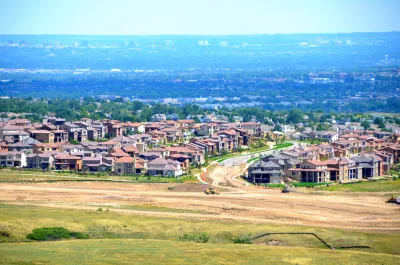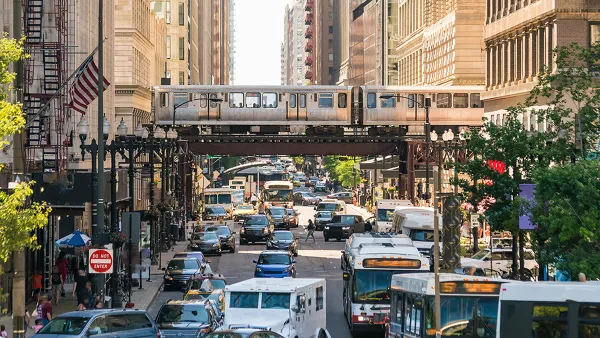The percentages have fluctuated on either side of the pandemic, but most Americans prefer to live in communities with larger houses, located farther away from schools, stores, and restaurants, according to a recent Pew Research Center survey.

The majority of Americans would prefer to live in communities with larger houses, located farther away from schools, stores, and restaurants, according to the latest edition of a Pew Research Center survey, conducted from March 27 to April 2, 2023.
“A majority of Americans (57%) say they would prefer to live in a community where ‘houses are larger and farther apart, but schools, stores and restaurants are several miles away,’” explains Ted Van Green in an article sharing the findings of the survey. “About four-in-ten (42%) would prefer a community where ‘houses are smaller and closer to each other, but schools, stores and restaurants are within walking distance.’
The share of Americans preferring larger houses and longer trips has dipped since the last survey, conducted in July 2021, when 60 percent of Americans stated this preference. “Public preferences were more evenly divided on this question in fall 2019, a few months before the coronavirus outbreak,” when the question polled at 53 percent and 47 percent, respectively.
The survey also produces obvious distinctions in preference along political lines, with 72 percent of Republicans and Republican leaners favoring larger houses and longer trips, and only 43 percent of Democrats and Democrat leaners preferring this arrangement.
Additional disaggregation by age, education, race and ethnicity, and ideology are detailed at the source article below.
FULL STORY: Majority of Americans prefer a community with big houses, even if local amenities are farther away

National Parks Layoffs Will Cause Communities to Lose Billions
Thousands of essential park workers were laid off this week, just before the busy spring break season.

Retro-silient?: America’s First “Eco-burb,” The Woodlands Turns 50
A master-planned community north of Houston offers lessons on green infrastructure and resilient design, but falls short of its founder’s lofty affordability and walkability goals.

Delivering for America Plan Will Downgrade Mail Service in at Least 49.5 Percent of Zip Codes
Republican and Democrat lawmakers criticize the plan for its disproportionate negative impact on rural communities.

Test News Post 1
This is a summary

Test News Headline 46
Test for the image on the front page.

Balancing Bombs and Butterflies: How the National Guard Protects a Rare Species
The National Guard at Fort Indiantown Gap uses GIS technology and land management strategies to balance military training with conservation efforts, ensuring the survival of the rare eastern regal fritillary butterfly.
Urban Design for Planners 1: Software Tools
This six-course series explores essential urban design concepts using open source software and equips planners with the tools they need to participate fully in the urban design process.
Planning for Universal Design
Learn the tools for implementing Universal Design in planning regulations.
EMC Planning Group, Inc.
Planetizen
Planetizen
Mpact (formerly Rail~Volution)
Great Falls Development Authority, Inc.
HUDs Office of Policy Development and Research
NYU Wagner Graduate School of Public Service





























